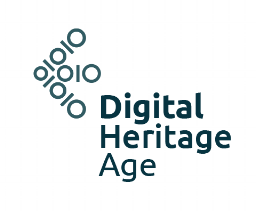Rathcroghan Field System Survey - Data Collection
Outline of Rathcroghan marking possible exposed revetment wall locations. Joe Fenwick NUIGalway 2012
The Rathcroghan Field System Survey is a project which had been floating around in my head for a number of years. While working as the Educational Development Officer at the Rathcroghan Visitor Centre I had the opportunity to reconnect the townlands where I spend the early years of my life,visiting my grandparents, and exploring the interlaced grass covered banks connecting the landscape.
There was always something ethereal about Rathcroghan for me. From the cave (Oweynagat) running underneath the road in front of my Grandparents house, said to descend into hell and emerge in Co. Sligo, to the mythical Black Pigs who tore through the land and held a ghostly paralyzing fear over me whenever I wandered through the fields. The stories of monstrous bulls, made real by the yearly arrival of a white bull in field beside the cave. As I grew older the stories of the Táin, and other Ulster Cycle tales, brought memories of exploring mounds and banks in Rathcroghan and a question as to what they really were.
Ogham Stone @ Oweynagat G. Dempsey 2011
While working at Rathcroghan I became interested in strange features known as Pitfields. Researching these features brought me back to those fields I wandered as a youth. My mind was no longer concerned with ghostly figures of the Black Pigs stalking me. Now a new interest had entered my mind. How old was this landscape? How did it all connect together? Is it even possible to figure it all out? Within the Rathcroghan Complex there are an abundance of sites that are rarely visited. Research as generally focused around the core complex of Rathcroghan mound, with additional surveys carried out at outlying sites such as Rathnadarve and the Mucklaghs. Early research did look at the landscape as a whole but concentrated on monuments, and routeways. There seemed to be something missing from the narrative. It was easy to find papers which alluded to mythical figures and their great palace. It was also not difficult to find reference to some historical families and kingship rights set between Rathcroghan and Carnfree. The figure of St. Patrick also made an appearance from time to time, attempting to convert the old pagan ways to the new Christian religion. But something was still missing.
To me the story of Rathcroghan does not lie within the sites associated with the mythology we remember today, but within the connection between older and newer monuments. How people treated these monuments within the past, incorporating them into new features. Avoiding them when laying out field systems, even within the way the landscape has been named. The townlands around Rathcroghan are not densely populated, and many of the families living there today have only been in the area in the early 20th C. A few farmhouses remain from the 19th C. appearing on Ordnance Survey maps, but many only appeared after the drawing of the 25-Inch OSI maps. There is a toponymy associated with the landscape which hints at earlier uses. The 'court tomb' Cloghannagcorp (Stone of the Corpse) and the ridge where Dáithi's Mound stands, recorded by O'Donovan as Knockannagcorp (Hill of the Corpse) appear to to interlinked through their naming. The Mucklaghs (giving us the connection to pigs 'Muck') do not stand as one monument but rather show a series of multi-phase field banks intersecting the larger earthen bank monuments, which possibly overlay a much earlier feature with links to the neolithic sites in the area. It is this story of how the people who lived in the townlands around Rathcroghan, and how their daily interaction with the monuments left behind by previous communities which interests me the most. This is where the Rathcroghan Field System Project comes to life.
The Rathcroghan Field System Survey aims to gather all available data collected for Rathcroghan and create an interactive map showing the evolution and connections between field systems and monuments within the Rathcroghan Complex. This will be carried out with the aid of a 3D topographical drone survey conducted by Dr. Paul Naessens of Western Aerial Survey
This high resolution 3D model, created using photogrammetry will allow us to augment previous research carried out by Ordnance Survey Ireland (LiDAR and Colour Infra-Red) as well as historical mapping and aerial data provided by Roscommon Co. Co. (through the OSI) and the Discovery Programme (Medieval Rural Settlement Project). The project will collate geophysical data collected by the Archaeology Department at NUIGalway and assess the landscape around Rathcroghan to determine how different generations have interacted with the monuments and landscape.
This Project is funded by



